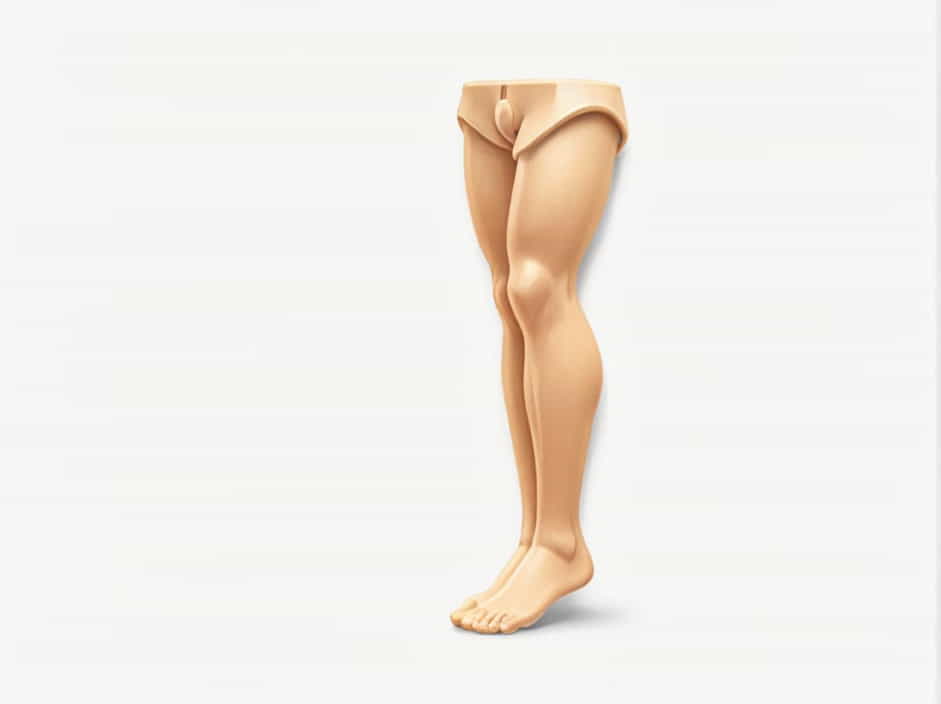When solving a crossword puzzle, you may come across the clue “The Ulnae of the Leg.” This phrase refers to a bone in the lower limb that is anatomically similar to the ulna in the forearm. The correct answer is the fibula, a slender bone located alongside the tibia in the lower leg.
The fibula plays an essential role in providing structural support, muscle attachment, and stability to the lower limb. While it does not bear significant weight like the tibia, it contributes to ankle movement and overall leg function.
Understanding the Relationship Between the Fibula and the Ulna
To comprehend why the fibula is referred to as the “ulnae of the leg,” it’s helpful to compare it with the ulna in the forearm.
Fibula vs. Ulna: Key Similarities
-
Both are secondary bones
- The fibula in the leg and the ulna in the arm are not the primary weight-bearing bones in their respective limbs.
- Instead, they provide structural support and attachment points for muscles and ligaments.
-
They run parallel to the primary bone
- The fibula is located beside the tibia (shinbone), just as the ulna is positioned alongside the radius in the forearm.
-
They contribute to joint stability
- The fibula plays a crucial role in stabilizing the ankle joint, just as the ulna contributes to the stability of the wrist joint.
Anatomy of the Fibula
1. Location and Structure
- The fibula is a long, thin bone that runs along the outer side of the lower leg, extending from the knee to the ankle.
- It is significantly smaller in diameter compared to the tibia, making it less involved in weight-bearing functions.
2. Parts of the Fibula
- Proximal end (Head of the Fibula):
- Articulates with the tibia near the knee joint.
- Serves as an attachment point for ligaments and muscles.
- Shaft:
- Long and slender, providing support for surrounding tissues.
- Distal end (Lateral Malleolus):
- Forms the outer ankle bone, crucial for ankle joint stability.
Functions of the Fibula
1. Provides Structural Support
- While the fibula does not bear much weight, it reinforces the leg structure and enhances stability.
- It works in conjunction with the tibia to maintain the integrity of the lower limb.
2. Assists in Ankle and Foot Movements
- The lateral malleolus (lower end of the fibula) is essential for ankle joint motion.
- It helps in dorsiflexion (lifting the foot up) and plantarflexion (pointing the foot down).
3. Acts as a Muscle Attachment Site
- Various muscles, including the peroneus longus and brevis, attach to the fibula, aiding in ankle and foot movement.
4. Provides Stability to the Leg
- The fibula prevents excessive rotation of the leg, working alongside the tibia and surrounding ligaments.
Common Injuries and Disorders of the Fibula
1. Fibula Fracture
- Common in sports injuries, car accidents, and falls.
- Symptoms include pain, swelling, bruising, and difficulty bearing weight.
- Treatment may involve casting, bracing, or surgery.
2. Stress Fracture
- Repetitive stress (e.g., long-distance running) can lead to small cracks in the fibula.
- Symptoms include gradual onset of pain, worsened by activity.
- Rest, physical therapy, and bracing are often recommended for recovery.
3. Peroneal Nerve Damage
- The common peroneal nerve, which wraps around the fibula, can be injured due to trauma or compression.
- Symptoms include foot drop (difficulty lifting the foot), numbness, and weakness.
4. Osteomyelitis (Bone Infection)
- Rare but serious infection of the fibula, typically caused by bacterial invasion.
- Requires antibiotic therapy or, in severe cases, surgical intervention.
How to Keep the Fibula Healthy
1. Maintain Bone Strength
- Ensure adequate calcium and vitamin D intake to support bone health.
- Foods rich in calcium include dairy, leafy greens, and fortified cereals.
2. Engage in Weight-Bearing Exercises
- Activities such as walking, jogging, and resistance training help maintain bone density and muscle strength.
3. Prevent Injuries
- Wear proper footwear to support the ankles and reduce stress on the fibula.
- Use protective gear when participating in contact sports.
4. Address Pain and Swelling Early
- If you experience persistent leg pain or swelling, consult a doctor to rule out stress fractures or nerve issues.
The fibula, often referred to as “the ulnae of the leg”, plays an important role in stability, movement, and muscle attachment. While it does not bear significant weight, it is essential for ankle function and structural support.
Understanding the fibula’s anatomy, functions, and potential injuries can help individuals take better care of their lower limbs. Whether you’re solving a crossword puzzle or learning about human anatomy, knowing that the fibula is the leg’s equivalent of the ulna provides valuable insight into the skeletal system.
